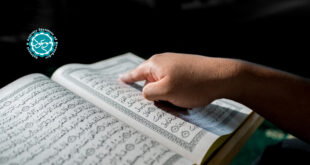Before beginning, however, I shall summarize the main points:
i) By its very nature, Imami hadith can only accept that those who believe in them must follow those propositions upon which the Imamiyyah are generally agreed, and the later Imamiyyah were here only following previous generations. These generally agreed positions have been previously pointed out in summary form.
ii) Unlike the situation with the Imamiyyah, there occured a split among the non-Imamis into those who submitted to the hadith which reached them, and who accepted them without any commentary or interpretation, and out of which those who were called the muhaddithun developed; and into those who did not accept them absolutely, such as the Mu‘tazilah, whether we accept the accusation by their opponents that they were unbelievers in the sunnah, or accept that, as they themselves said, they were unbelievers in those hadith that were fabricated because they did not accord with their beliefs – and that they interpreted other hadith to accord with their beliefs. Between these two camps there arose a bitter controversy, with accus- ations of heresy and going beyond the bounds of religion, even sometimes reaching physical confrontation. However, this kind of dispute never arose among the Imamiyyah at all, not even to the smallest degree. This has already been attributed to the fact that Imami hadith did not give rise to such splits, and clearly demonstrated Imami beliefs so that such a split could not occur.
iii) We have already pointed out that the kalam school among the non-Imamis is really represented by the Mu‘tazilites, not the Ash‘arites. Investigation reveals that the latter had as their aim to harmonize the intellectual procedures of the Mu‘tazili school with the beliefs of the muhaddithun. They did have recourse to investigation, though this was not a position sanc-tioned by their hadith, and they found nothing in the sunnah to authorize their interpretation and which could support their claim to be interpreting the sunnah by the sunnah. They were obliged not to reject the sunnah so that they would not be accused of depending solely on interpretation as the Mu‘tazilah were.
iv) The Imamiyyah did not blindly follow the Mu‘tazilah in those opinions on which they agreed, but were only following their Imams in these beliefs. The Imams preceded the Mu‘tazilah both historically and in status, and so one cannot say that they were taught by them.
v) The Mu‘tazilah themselves agreed that they took their basic positions – tawhid and ‘aql – from Amir al-Mu’minin, ‘Ali ibn Abi Talib, peace be upon him, through isnad which were trust- worthy for them; and ‘Ali, peace be upon him, was the first of the Shi‘i Imams. The Imamiyyah paid more attention to the evidence of his teachings than did the Mu‘tazilah, and we have already given an example of this. So, if it is incorrect to say that the Mu‘tazilah borrowed from the Imamiyyah, surely it is, in fact, all the more incorrect to say that the Imamiyyah bor-rowed from them.
Notes:
1. The Emendation of A Shi‘ite Creed, Intro., p.13ff.
2. Martin McDermott, The Theology of al-Shaikh al-Mufid, Dar al-Mashriq, Beirut, 1978, pp.367-9.
3. Talbis Iblis, al-Muniriyyah Press, Cairo, 1368, p.116.
4. Daf‘ shubahi ‘t-tashbih bi-akuffi ‘t-tanzih, al-Maktabah at-Tawfiqiyyah, Cairo, 1976, pp.73-74.
5. al-Munazirah fi ‘l-‘aqidati ‘l-Wasitiyyah, Majmu‘atu ‘r-rasaili ‘l-kubra, Dar
6. al-Bukhari, at-Tarikhu ‘l-kabir, vol.1, pt.1, pp.379-80; Ibn Abi Hatim, al- Jarh wa ‘t-ta‘dil, vol.2, pp.209-10; Ibn Hibban, ath-Thiqat, vol.8, pp.115-6; al-Khatib, Tarikh Baghdad, vol.6, pp.345-55; Abu Nu‘aym, Hilyatu ‘l-awliya’, vol.9, pp.234-8; al-Mazzi, Tahdhibu ‘l-kamal, vol.2, pp.373-88; adh-Dhahabi, Siyar a‘lami ‘n-nubala’’, vol.11, pp.358-82; Tadhkiratu ‘1-huffaz, vol.2, pp.433-5; Ibn Hajar, Tahdhibu ‘t-tahdhib, vol.2, pp.216-9.
7. Ishaq ibn Rahwayh, ‘Aridah al-ahwadhi, vol.30, p.332.
8. al-Jami‘u ‘s-sahih: zakat, chap. “sadaqah”, vol.3, pp.50-51, no.662.
i, Tabaqatu ‘l-huffaz, pp.310-1; Ibnu ‘l-Jazari, Tabaqatu ‘l-qurra’, vol.2, pp.97-98.9. adh-Dhahabi, Tadhkiratu ‘l-huffaz, vol.2, pp.720-31, al-‘Ibar, vol.2, p.149; as-Sam‘ani, al-Ansab, vol.5, p.124; Ibnu ‘1-Athir, al-Lubab, vol.1, p.442; Ibnu ‘l-Jawzi, al-Muntazam, vol.6, pp.184-6; Ibn Kathir, al-Bidayah wa ‘n- nihayah, vol.11, p.149; as-Subki, Tabaqatu ‘sh-Shafi‘iyyah, vol.3, pp.109-19; as-Safadi, al-Wafi bi ‘1-wafayat, vol.2, p.196; al-Yafi‘i, Mir’atu ‘l-jinan, vol.2, p.264; Ibn ‘Abdi ‘l-Hayy, Shadharatu ‘dh-dhahab, vol.2, pp.262-3; as- Suyut
10. at-Tawhid wa ithbat sifati ‘r-rabb, revised and commented upon by Muhammad Khalil Haras, teacher in the College of Usulu ‘d-Din (in al-Azhar), al-Azhar University Library, Cairo, 1387/1968, p.23.
11. Ibid., pp.50-55.
12. Ibid., pp.82-85.
13. Ibid., pp.85-88.
14. Ibid., p.145.
15. 33 Tadhkiratu ‘l-huffaz, vol.2, pp.621-2; al-‘Ibar, vol.2, p.64; Mir’atu ‘l-jinan, vol.2, p.193; Ibn Kathir, vol.11, p.69; Tabaqatu ‘sh-Shafi‘iyyah, vol.2, pp.302-6; Tabaqatu ‘1-huffaz, p.274; Tabaqatu ‘1-Hanabilah, vol.1, p.221.
16. ar-Radd ‘ala Bishr al-Marrisi, ‘Aqaid as-salaf, published by Dr‘Ali Samian-Nashshar, ‘Ammar Jam‘i at-Talibi; Munsha’atu ‘l-Ma‘arif, Alexandria, Egypt, 1971, p.382.
17. Ibid., p.439.
18. i.e., Bishr ibn Ghiyath al-Marrisi, al-Baghdadi, al-Hanafi (c 138/755–218/833), the scholar who proclaimed and defended the theory that the Qur’an was created, along with other Mu‘tazili ideas, whom ad-Darimi is refuting.
19. Ibid., p.454.
20. Ibid., p.387.
21. Ibid., p.398.
22. Ibid., pp.420, 423-4, 427-8.
23. Ibid., p.516.
24. Ibid., p.432-3, 508.
25. at-Tawhid, Maktabatu ‘s-Saduq, Tehran, 1387, p.17-18.
26. al-Balkhi, Dhikru ‘l-Mu‘tazilah, p.64; a1-Qadi ‘Abdu ‘l-Jabbar, Fadlu ‘l- i‘tizal wa dhikru ‘l-Mu‘tazilah, pp.146-7, 150, 163, 214-5; Ibnu ‘l-Murtada, al-Munyah wa ‘l-amal, pp.26-27, 125-8; al-Bahru ‘z-zakhkhar, vol.1, p.44; Nashwan al-Himyari, Huru ‘l-‘iyn, p.206.
27. Siyar a‘lami ‘n-nubala’, vol.13, p.149.
28. 46 Maktabatu ‘s-Saduq, Tehran, 1387, pp.48-56.
29. Vol.4, pp.274-84.
30. Vol.1, p.163, no.5.
31. Vol.3, p.257.
32. Vol.1, p.271, no.12.
33. an-Najashi, p.259, Majma‘u ‘r-rijal, vol.6, p.87; adh-Dhari‘ah, vol.7, p.191, no.972.
34. This would appear to be a scribal error, the true person being Zayd ibnWahb al-Jahni (d. 96/715), one of the greatest of the Followers of the Com- panions of the Prophet, and one of the followers of the Imam ‘Ali, who wrote a Kitab Khutab Amir al-Mu’minin ‘alayhi ‘s-salam ‘ala ‘l-manabir fi ‘l-jum‘ah wa ‘l-a‘yad wa ghayriha; see at-Tusi, al-Fihrist, p.97; Ma‘a1imu ‘l-‘ulama’, p.44; Majma’u ‘r-rijal, vol.3, p.85; adh-Dhari‘ah, vol.7, p.189. no. 965.
35. Mu’assasat al-A‘lami, Beirut, Lebanon, 1395/1975, pp.202-4.
36. Board of Writing, Translation, and Publication, Cairo, 2nd ed., 1381/ 1962, vol.4, pp.152-4.
37. Nahju ‘l-Balaghah, the commentary of Muhammad ‘Abduh and Muham-mad Muhyi ‘d-Din ‘Abdu ‘l-Hamid, al-Istiqamah Press, Cairo, vol.1, pp.
38. Fadlu ‘l-i‘tizal wa dhikru ‘l-Mu‘tazilah, p.163.
39. Sharhu ‘l-usuli ‘l-khamsah, p.268. 163-4; see also al-Bihar, vol.77, p.318, and the commentary of Ibn Abi ‘l- Hadid, vol.6, pp.413-5.
40. al-Intisar wa ‘r-radd ‘ala Ibnu ‘r-Rawandi al-mulhid, p.14.
41. The Theology of ash-Shaikh al-Mufid, pp.2-3.
42. Ibid., p.395.
43. Mizanu ‘l-i‘tidal, vol.3, p.149.
44. Lisanu ‘l-mizan, vol.4, p.248.
Tags Imamiyyah
Check Also
15 European Countries With Most Muslims
According to Mouood, quoting by World Atlas: 15 European Countries With Most Muslims By 2050, Muslims …
 Mouood Mouood English Edition
Mouood Mouood English Edition



